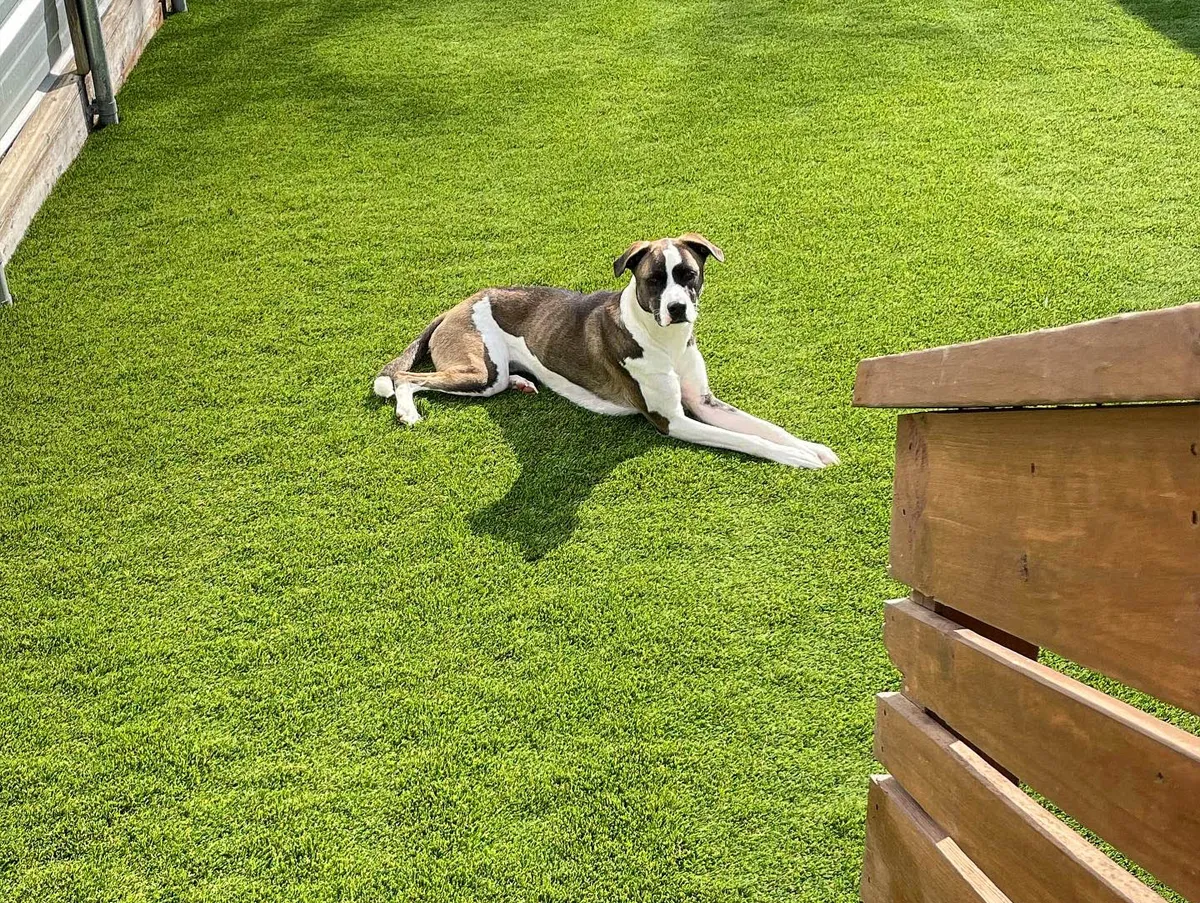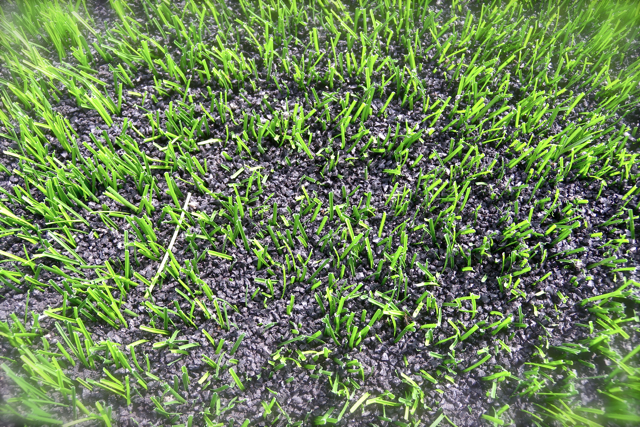Look Into the Environmental Perks of Opting for Artificial Lawn Solutions
The fostering of synthetic grass options provides an engaging opportunity to resolve pressing environmental difficulties. By dramatically minimizing water usage and decreasing the application of hazardous chemicals, these choices not just advertise lasting landscaping however likewise safeguard neighborhood ecological communities. Additionally, the reduced carbon footprint connected with decreased upkeep tasks adds to a much more lasting technique to land administration. Nevertheless, the ramifications of these benefits expand past mere conservation efforts, questioning about their lasting effect on habitat preservation and general environmental equilibrium. Checking out these dimensions discloses a complex interplay worth thinking about.
Water Conservation Perks
Among one of the most significant advantages of synthetic turf is its capacity to conserve water. Traditional yard lawns require substantial irrigation, specifically in locations vulnerable to drought or water constraints. On the other hand, man-made grass does not need watering, substantially minimizing the overall need for water sources. This function is particularly valuable in dry regions where water scarcity is a pushing issue.
By removing the requirement for regular watering, synthetic grass contributes to sustainable landscape methods and aids alleviate the ecological effect of excessive water intake. In addition, the conservation of water includes the reduction of runoff, which can bring about soil disintegration and river contamination.
Additionally, the installment of synthetic lawn permits towns and home owners to designate water resources much more efficiently, concentrating on essential uses such as alcohol consumption water and farming. The change towards artificial grass not just promotes liable water use but also lines up with wider ecological objectives intended at maintaining natural deposits.
As communities increasingly prioritize sustainability, the water conservation advantages of synthetic grass provide a compelling instance for its fostering in household and commercial landscape design projects.
Reduced Chemical Usage
The transition to fabricated turf considerably reduces the reliance on chemical treatments commonly used in natural turf upkeep. Typical lawn monitoring typically includes the application of plant foods, herbicides, and pesticides to promote development and control bugs. These chemicals can present dangers to human health and wellness, local wild animals, and the environment, adding to dirt and water contamination.
In contrast, artificial lawn eliminates the requirement for these dangerous materials. By lessening the launch of artificial compounds into the ecosystem, man-made lawn promotes much healthier soil and water systems.
Additionally, the absence of chemical runoff related to synthetic grass installations assists secure local waterways from air pollution, sustaining marine life and preserving biodiversity. Arizona turf. As communities progressively focus on sustainable techniques, opting for man-made turf presents a feasible remedy that aligns with environmental conservation objectives. Via this change, building owners can appreciate rich environment-friendly rooms without endangering ecological wellness, paving the way for a much more sustainable future
Reduced Carbon Impact

Furthermore, the setup of synthetic lawn can result in substantial water conservation. Natural yards require considerable amounts of water for irrigation, which not only includes to the carbon impact associated with water extraction and treatment but likewise pressures neighborhood water sources. On the other hand, synthetic grass requires very little upkeep, needing no watering, therefore significantly lowering water usage and its associated energy prices.
In addition, the durability of synthetic grass contributes to its decreased carbon impact. With a life expectancy of approximately 15 years or more, the need for frequent substitutes is reduced, causing much less waste and lower energy usage in production and getting rid of standard turf alternatives. In general, synthetic turf offers a lasting alternative for eco mindful landscaping.
Environment Conservation
Environment conservation is a crucial consideration in the debate over landscape design selections, especially when contrasting man-made grass to natural grass. Natural lawn lawns typically require extensive upkeep, including making use of pesticides, herbicides, and fertilizers, which next can negatively impact local communities. These chemicals can seep into the dirt and waterways, harming native flora and fauna and interfering with neighborhood habitats.
Synthetic grass gets rid of the requirement for damaging chemicals, thereby protecting close-by wildlife and preserving the stability of bordering ecosystems. The setup of artificial lawn can lead to the conversion of previous turf locations right into even more biodiverse landscapes, such as pollinator gardens or indigenous plant areas, which can support local wild animals.
Eventually, the change to synthetic lawn not just saves water and decreases upkeep efforts however likewise promotes a more harmonious relationship between human tasks and the natural surroundings, advertising habitat preservation at the same time.
Long-Term Sustainability
Long-lasting sustainability is an important aspect in assessing the benefits of fabricated grass over standard lawn lawns. One of one of the most substantial benefits of synthetic turf is its toughness; it can last up to 15-20 years with marginal maintenance, whereas natural turf calls for frequent reseeding and replacement. This long life minimizes the need for continuous resources, such as water, plant foods, and chemicals, which are vital for maintaining a healthy yard lawn.
In addition, synthetic lawn adds to a reduction in carbon emissions connected with grass care tools. Typical lawns typically require gas-powered mowers, leaners, and blowers, all of which add to air pollution. Artificial turf companies phoenix. In comparison, synthetic grass gets rid of the requirement for such equipment, promoting a cleaner setting
In addition, the production of synthetic grass significantly uses recycled materials, boosting its sustainability profile. As producers embrace eco-friendly practices, the ecological footprint of man-made turf proceeds to decrease.

Conclusion
The adoption of synthetic grass options offers substantial environmental benefits, consisting of considerable water conservation, decreased reliance on damaging chemicals, and a lower carbon footprint. Additionally, synthetic grass aids in preserving all-natural habitats by minimizing land disturbance and advertising lasting sustainability through the use of sturdy products. Jointly, these aspects emphasize the capacity of synthetic grass to contribute positively to ecological health and supply a feasible option to standard landscape design methods in a progressively resource-conscious world.
In contrast, man-made grass does not need watering, dramatically minimizing the general demand for water resources. By lessening the launch of synthetic substances into the ecosystem, artificial grass promotes healthier soil and water systems.
In addition, the installment of fabricated lawn can result in considerable water preservation. In contrast, man-made grass requires marginal maintenance, requiring no watering, therefore significantly lowering water use and its connected energy prices.
